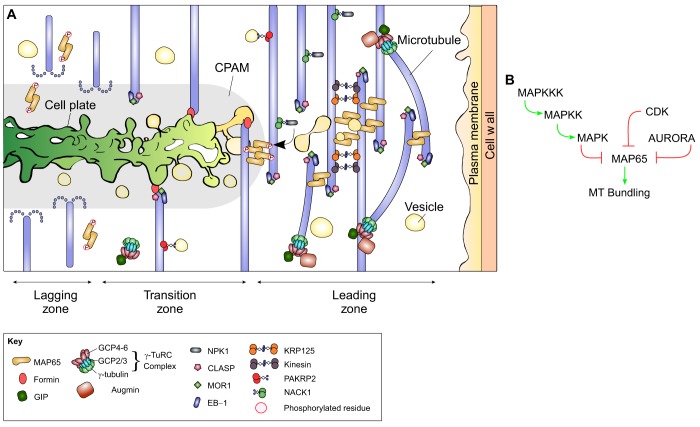Fig. 2.
Regulation of microtubule processes in the phragmoplast zones. (A) The key events in the phragmoplast zones. In the leading zone, branching and cytoplasmic microtubules are generated by the γ-TuRC-mediated nucleation. Polymerization of microtubules is supported by a family of plus-end-binding proteins. Anti-parallel microtubules are bundled by MAP65 (orange). This overlap of anti-parallel microtubules defines the midzone and recruits nascent cell plate vesicles (pale yellow). In the transition zone, microtubules undergo nucleation, polymerization and depolymerization. Microtubules may be stabilized through formin-mediated contacts with the nascent cell plate membrane or interaction with yet unknown components of the CPAM. Kinesins transport cell plate materials and MAPKKK NPK1 along microtubules. Cell plate vesicles undergo fusion and tubulation, resulting in a tubulo-vesicular network (pale yellow). Callose accumulates in the cell plate (green gradient). In the lagging zone, microtubule-stabilizing proteins become inactivated through phosphorylation and microtubules depolymerize. (B) Multiple kinase pathways regulate the interaction between MAP65 and microtubules. The MAPK cascade, CDKs and Aurora kinases phosphorylate different residues on the C-terminal domain of MAP65. Phosphorylation weakens the affinity of MAP65 for microtubules and inhibits its ability to bundle anti-parallel microtubules. Green lines indicate activation and red lines indicate inhibition.

